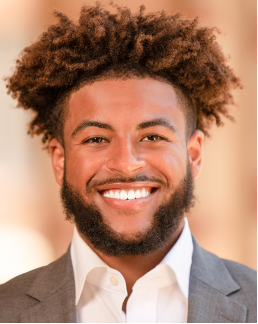Editors Note: We were pleasantly surprised when Chase Griffin, current UCLA quarterback and publisher of The Athlete's Bureau, reached out to us after the release of this year's Higher Ed CMO Study brand measurement webinar. We are thrilled to feature his thoughts on the relationship between higher ed CMOs, brand stewardship, and college athletes in the June edition of our Insights newsletter.
Higher Ed CMOs must keep college athletes' primary relationships within the university ecosystem.
According to the recently released SimpsonScarborough 2023-2024 Higher Ed CMO Study, the overwhelming majority of higher ed CMOs report directly to Chancellors/Presidents and occupy cabinet level positions within the university hierarchy. This positions higher ed CMOs to connect the missing link between athletes and campus leadership. And, according to athlete polling conducted by The Athlete’s Bureau in conjunction with The Generation Lab, most college athletes currently have no direct interaction with their Chancellor/President.

The higher ed CMO has the opportunity to establish and deepen the university's relationship with its college athletes across three dimensions: Customer, Partner, and Family.
- Customer: College athletes and other students are the primary customers of higher education institutions. It is incumbent upon CMOs and senior campus leadership to deliver a positive and comprehensive academic, social, and athletic experience in order to forge a lifetime relationship.
- Partner: Starting in Fall 2025, schools will be able to compensate athletes directly for the use of their NIL. Since the combined athlete social and earned media reach often exceeds those of official university and athletic department channels, there is an unprecedented opportunity for colleges and athletes to partner for enhanced university brand story-telling and targeted university stakeholder outreach.
- Family: While the ability to provide competitive athlete compensation (NIL, Revenue Share) will become a driving force in athlete recruitment and retention, most athletes still seek to make a “40-year decision” and are looking for a lifetime academic and social home when choosing a college. The higher ed CMO must ensure that athletes feel a part of the overall university family.
Having university alums in front-line leadership positions provides a significant competitive advantage for brand stewardship, building relationships with athletes, and embodying the essence of being a lifelong member of a university's community. Here are a few standout examples (with videos of these campus leaders discussing their university role and status as alums of their institutions):
- UCLA: Mary Osako, Vice Chancellor Strategic Comms, CMO, & UCLA alum
- LSU: Scott Woodard, LSU Athletic Director and Alum
- Michigan: Jim Harbaugh, Former Michigan Head Football Coach & Michigan Alum
Higher ed CMOs must master managing university-athlete relationships and brand stewardship in modern college athletics.
Over the past decade, several legal and economic forces have combined to redefine the relationship between college athletes and their institutions. These forces have come to a head, which will usher in a new era of college athletics starting in the Fall of 2025. The anticipated changes to college athletics present a tremendous opportunity for higher ed CMOs who can master and manage the five forces impacting their relationship with athletes and stewardship of the overall university brand. 
- Athlete Empowerment. Athlete Compensation (NIL, Revenue Share), the transfer portal (freedom of movement), and the ability to have professional representation have raised college athletes' expectations. The ability of higher ed CMOs to deliver on these expectations will determine the quality of the relationship between athletes and their institutions.
- Conference Realignment: The changing composition of conferences and the need to generate economic returns on the billions of dollars in TV rights investments has increased the branding efforts of conferences and networks. On balance, these new configurations are a positive development and increase the resources and exposure for college athletes. It is incumbent that higher ed CMOs work with Athletic Departments and athletes to ensure the university’s unique brand and story-telling keep pace with conference and TV network messaging.
- Athletic Department Outsourcing: In response to the historic changes, many athletics departments are outsourcing critical functions and bringing outside entities into direct contact with college athletes. The functions outsourced are generally multimedia rights firms, NIL management companies, and brand marketing agencies. While most of these decisions are made in good faith, the reality is that most of these outsourced partners are start-ups, roll-ups, and recapitalized companies. Historically, the overwhelming majority of these types of start-ups fail. It is imperative that CMOs take a more active oversight role to ensure athletic departments manage these relationships to ensure adherence to the university’s overall mission, protect the university’s brand, and ensure the athlete’s primary relationship is still tethered to the school.
- Donor and Marketing Collectives: While operating outside of the official purview of the university, donor collectives have generated hundreds of millions of dollars in athlete compensation and have been the primary vehicle for contracting with and compensating college athletes since July 2021. Since collectives bring athletes, alumni, donors, and brands into contractual relationships with each other, it is important that higher ed CMOs exercise some oversight over the way these university ecosystem system stakeholders interact. As more collectives are brought in-house, the CMO’s role of brand stewardship and athlete-relationship management will only increase in importance.
- Enrollment Cliff and War for Students: Several demographic factors will lead to a double-digit drop in the college-age population, intensifying the competition for a smaller pool of college students. This drop in college-age students increases the pressure on higher ed CMOs to recruit and retain students and athletes. Any avoidable missteps in brand stewardship and athlete-relationship building could have material consequences for universities' overall brand reputation and appeal.
There has never been a better time to be a college athlete. With the compensation and exposure opportunities on the horizon, college athletes have the potential to set an educational and financial foundation that lasts a lifetime. In order to maximize these opportunities for the athlete and their institutions, higher ed CMOs need to be proactive in their brand stewardship and deliver high quality experiences that establish athlete-university relationships that are mutually beneficial for decades to come.
__
Chase Griffin is the current quarterback at UCLA, publisher of The Athlete's Bureau, a nationally recognized leader in the athlete empowerment movement, a 2X NIL Athlete of the Year award winner, and a triple Bruin graduate (BA ’21, M.ED ‘23, MLS ‘24). He is currently a Fellow at UC Investments.
Learn more about SimpsonScarborough's 2023-2024 Higher Ed CMO Study on the Higher Ed CMO Study website.











